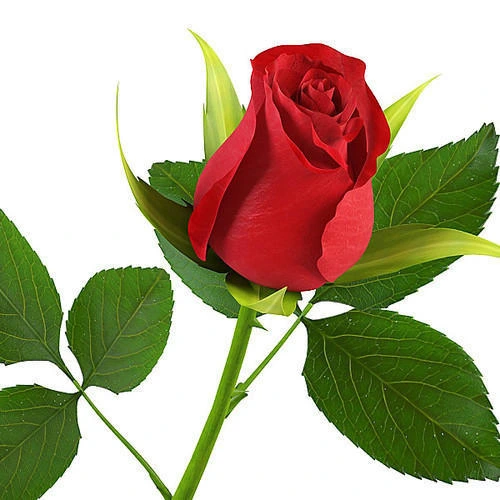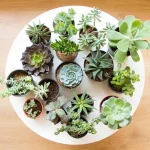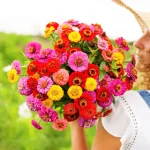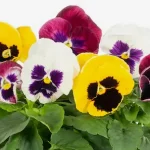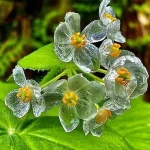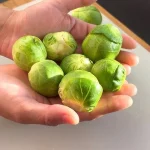The Rose: Nature’s Timeless Symbol of Beauty and Love
The rose, often hailed as the “queen of flowers,” has captivated human hearts for centuries with its delicate beauty, intoxicating fragrance, and deep symbolic meanings. Revered across cultures, the rose stands as a universal emblem of love, passion, and purity, making it one of the most beloved and widely recognized flowers in the world. From the ancient gardens of Persia to modern-day bouquets that symbolize romantic devotion, the rose holds an unparalleled place in history and horticulture.
Roses are more than just ornamental blooms. Their presence can be traced back to antiquity, where they were cultivated not only for their aesthetic appeal but also for their medicinal properties and role in religious ceremonies. With over 150 species and thousands of hybrids, roses come in an array of colors, each carrying its own unique symbolism. Whether it’s the classic red rose that signifies deep love or the white rose that symbolizes purity and innocence, each variety tells a story that transcends time.
In this article, we will explore the rich history, cultural significance, and biological wonders of the rose. Whether you’re a gardening enthusiast or someone simply enchanted by the beauty of this remarkable flower, the rose’s legacy is sure to inspire admiration and appreciation for nature’s most iconic bloom.
Overview of the Rose Flower: Nature’s Most Iconic Bloom
The rose is a perennial flowering plant from the genus Rosa and is cherished for its stunning beauty, sweet fragrance, and deep cultural significance. Known for its layered petals and thorny stems, the rose has earned a special place in history, literature, art, and human sentiment. Whether admired in gardens, exchanged as a token of affection, or featured in poetry, the rose is far more than just a flower—it’s a symbol of love, beauty, and emotional expression across the globe.
Roses are native to various regions, particularly Asia, but have been cultivated and hybridized throughout Europe, the Middle East, and the Americas. Today, they come in an array of colors, sizes, and shapes, with over 150 species and thousands of hybrids, making them one of the most diverse and versatile plants in horticulture. Each variety offers something unique, whether it’s the classic elegance of a red rose, the cheerful charm of a yellow one, or the soft purity of a white bloom.
The rose has significant historical roots as well, being treasured by ancient civilizations like the Greeks and Romans, who associated the flower with the goddess of love. In the Middle Ages, it became a Christian symbol of the Virgin Mary, and later, it adorned royal gardens and was cultivated by monarchs. Today, roses are not only admired for their beauty but also for their medicinal properties, with rose water and rose oil being used in aromatherapy, skincare, and wellness products.
From its profound meanings in love and romance to its versatility in gardens and floral arrangements, the rose continues to be one of the most beloved and symbolic flowers in the world. Whether growing wild or in a carefully tended garden, the rose is a timeless reminder of nature’s elegance and humanity’s emotional connection to beauty.
Popular Varieties of Rose Flower: A Diverse Collection of Beauty
The rose, with its unmatched elegance and symbolism, is available in a vast range of species and hybrids, each offering unique characteristics. Whether you’re a gardening enthusiast, a floral designer, or simply an admirer, there’s a rose variety to suit every preference. Below is an overview of some of the most popular and captivating varieties of roses that have made their mark in the world of flowers.
1. Hybrid Tea Roses
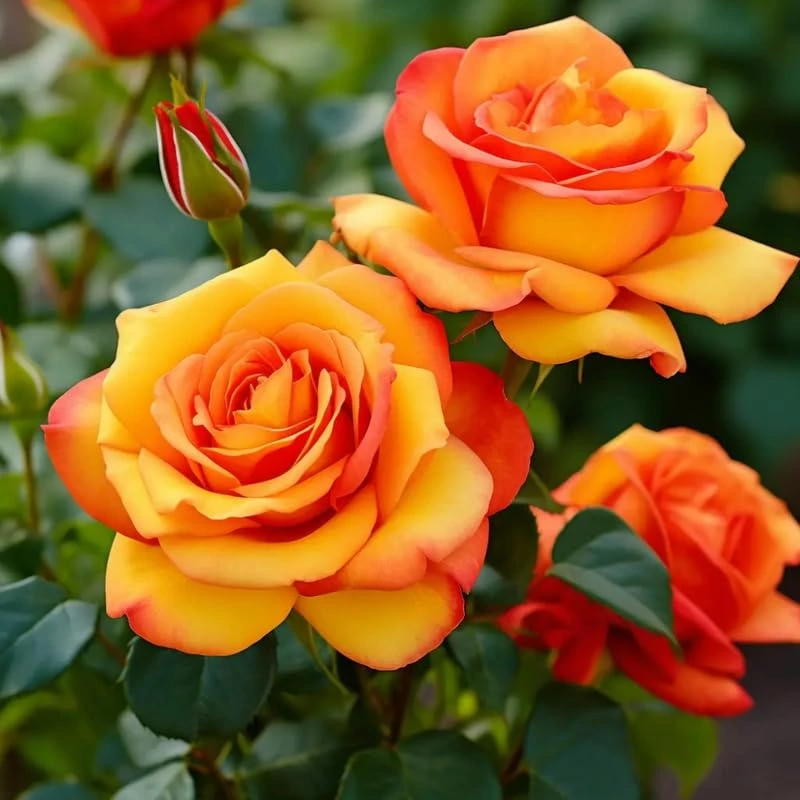
One of the most well-known and widely cultivated varieties, hybrid tea roses are famed for their large, single blooms and long, upright stems, making them ideal for cutting and floral arrangements. These roses typically have a high petal count and come in a variety of colors, ranging from classic reds and whites to more unique shades like lavender and orange.
2. Floribunda Roses
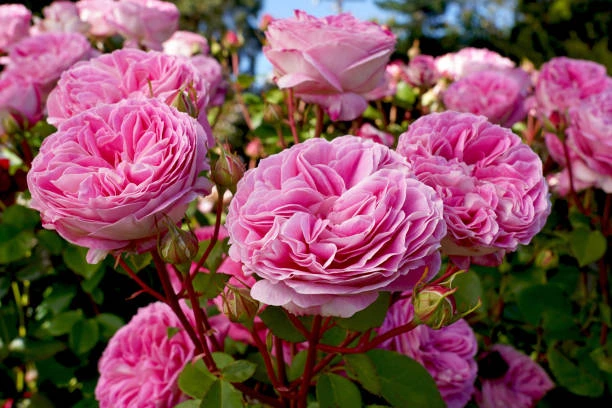
Floribunda roses are characterized by their ability to produce clusters of blooms rather than a single flower per stem. This variety is known for its prolific blooming throughout the season, offering a vibrant display of color in gardens. Floribundas come in various hues, including pink, yellow, and orange, and are prized for their hardiness and low-maintenance nature.
3. Grandiflora Roses
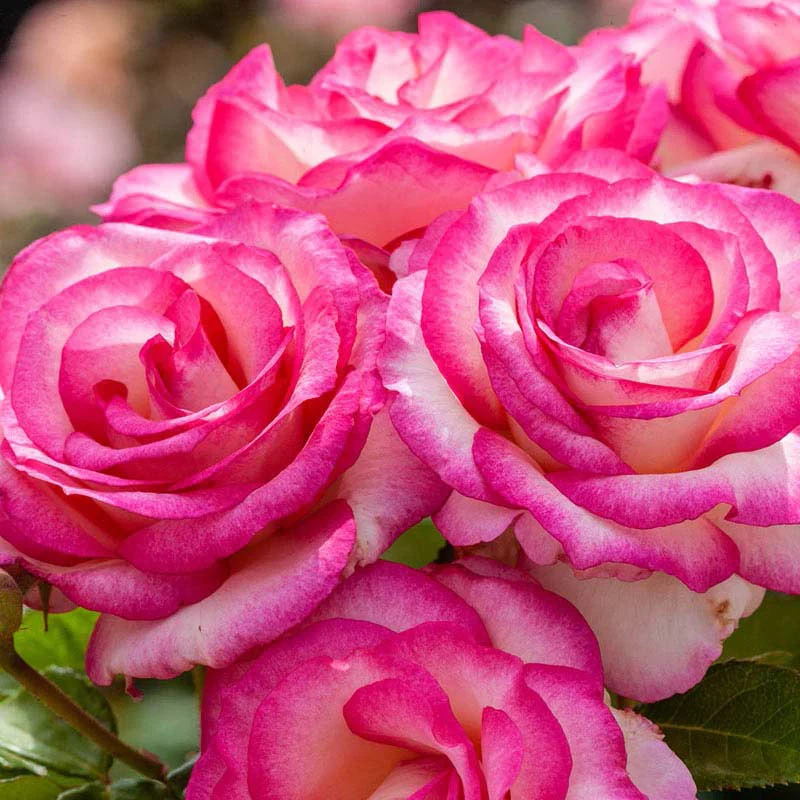
Grandiflora roses are a cross between hybrid teas and floribundas, combining the large, elegant blooms of hybrid teas with the clustered flowering habit of floribundas. This variety can grow quite tall and is often used in landscaping for its visual impact. Grandifloras are available in many shades and offer a long-lasting display of blooms.
4. Climbing Roses
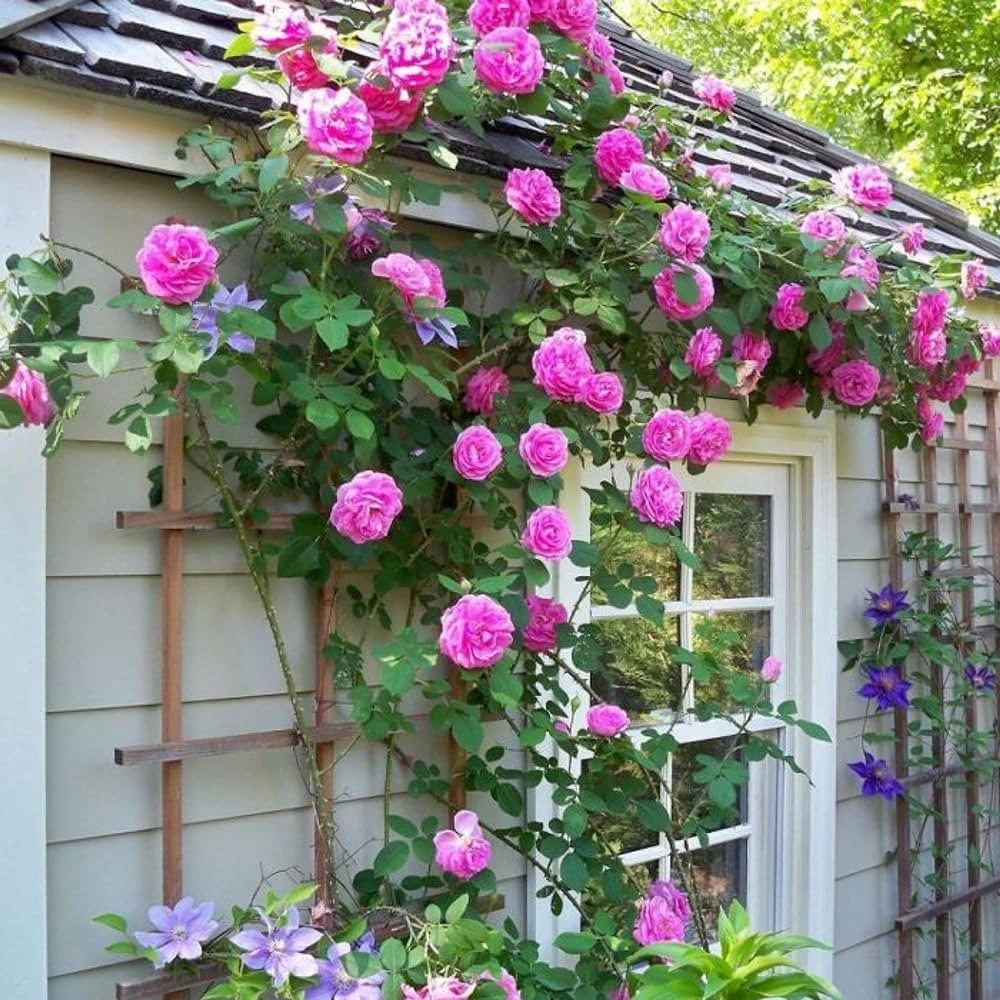
Known for their vining habit, climbing roses are perfect for trellises, arbors, and walls. These roses produce long canes that can be trained to grow along structures, adding a romantic and dramatic effect to gardens. Climbing roses bloom profusely, with varieties available in an array of colors such as red, pink, and white.
5. Miniature Roses
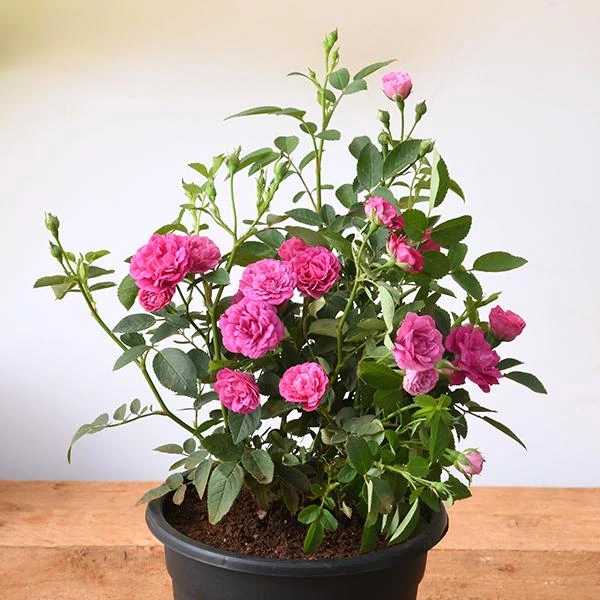
Despite their small size, miniature roses pack all the beauty of full-sized varieties into compact plants, making them ideal for containers, small gardens, or indoor decoration. Miniature roses come in various colors and typically bloom continuously throughout the growing season. Their hardiness and versatility make them popular among gardeners and rose enthusiasts alike.
6. Shrub Roses
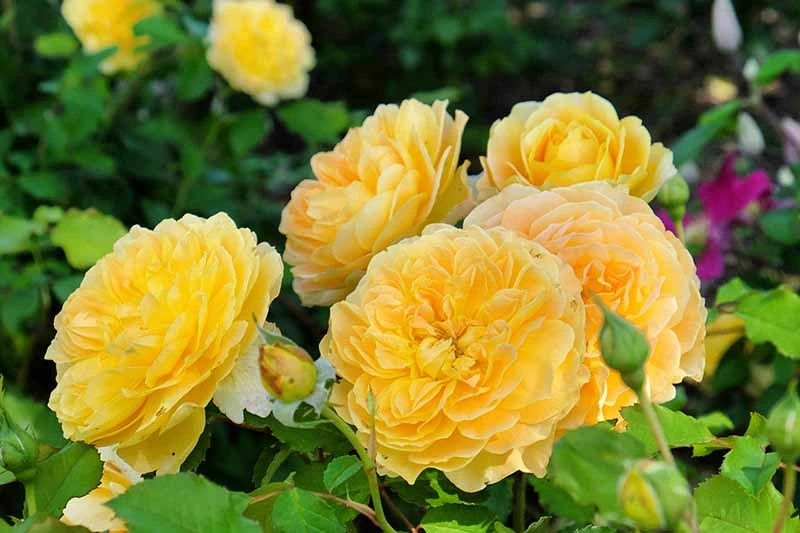
Shrub roses are a diverse group of hardy, disease-resistant roses that are often used in landscaping for their ability to grow into dense, bushy plants. These roses tend to be low-maintenance and can withstand harsher conditions, making them perfect for garden borders or mass plantings. Shrub roses offer a range of colors and bloom profusely throughout the growing season.
7. English Roses (David Austin Roses)
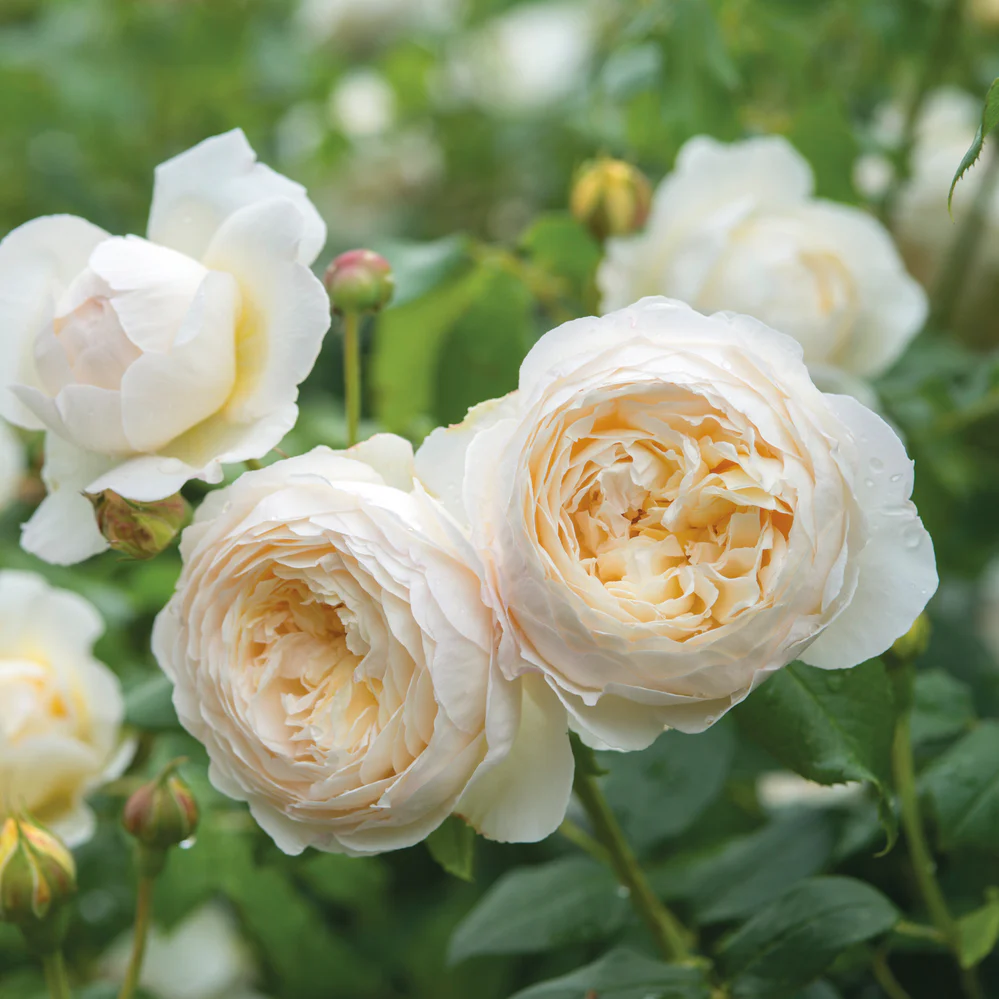
Bred by renowned horticulturist David Austin, English roses are a favorite among rose lovers for their old-world charm, cup-shaped blooms, and intense fragrance. These roses combine the beauty and scent of old-fashioned roses with the repeat blooming and disease resistance of modern varieties. English roses are available in shades like soft pink, creamy white, and deep red.
8. Polyantha Roses
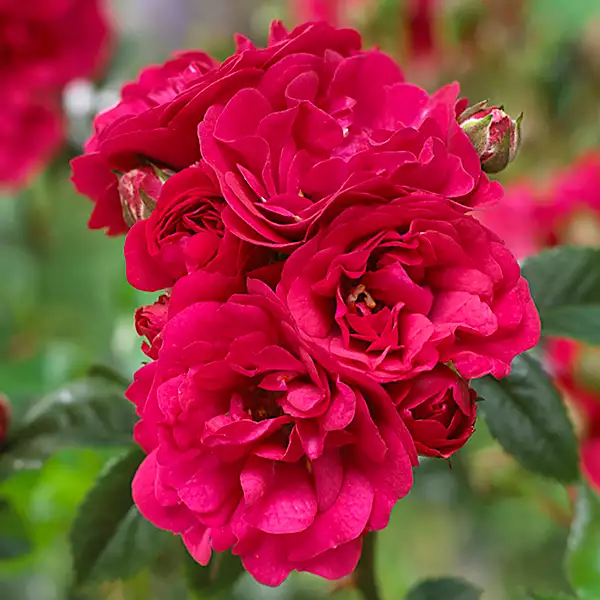
Polyantha roses are small, hardy bushes that produce clusters of small flowers. These roses are known for their continuous blooming and ability to thrive in various conditions. Polyanthas are often used in mass plantings or as ground cover in gardens and are available in colors like white, pink, and red.
9. Groundcover Roses
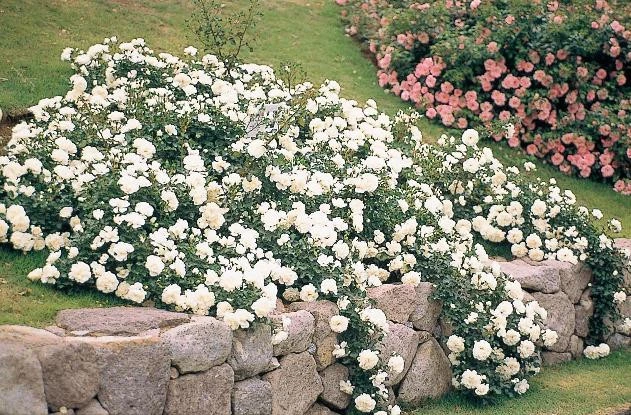
As the name suggests, groundcover roses are low-growing plants that spread across the ground, making them perfect for covering large areas or filling in gaps in the garden. They are disease-resistant, low-maintenance, and bloom continuously. Groundcover roses are available in a wide range of colors and are known for their adaptability to different garden conditions.
10. Old Garden Roses
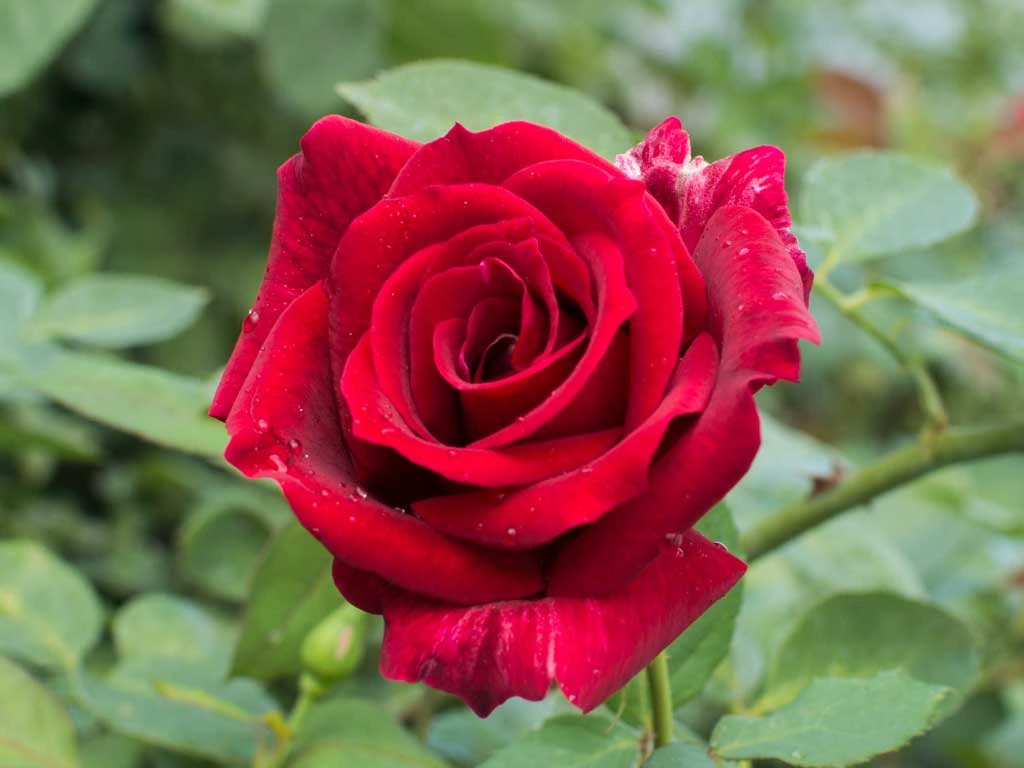
Often referred to as “antique” or “heirloom” roses, old garden roses are varieties that existed before 1867, the year hybrid teas were introduced. These roses are known for their rich fragrance, full blooms, and resistance to disease. They come in many forms, from climbing to bush varieties, and are beloved for their historical charm and timeless beauty.
11. Tree Roses (Standard Roses)
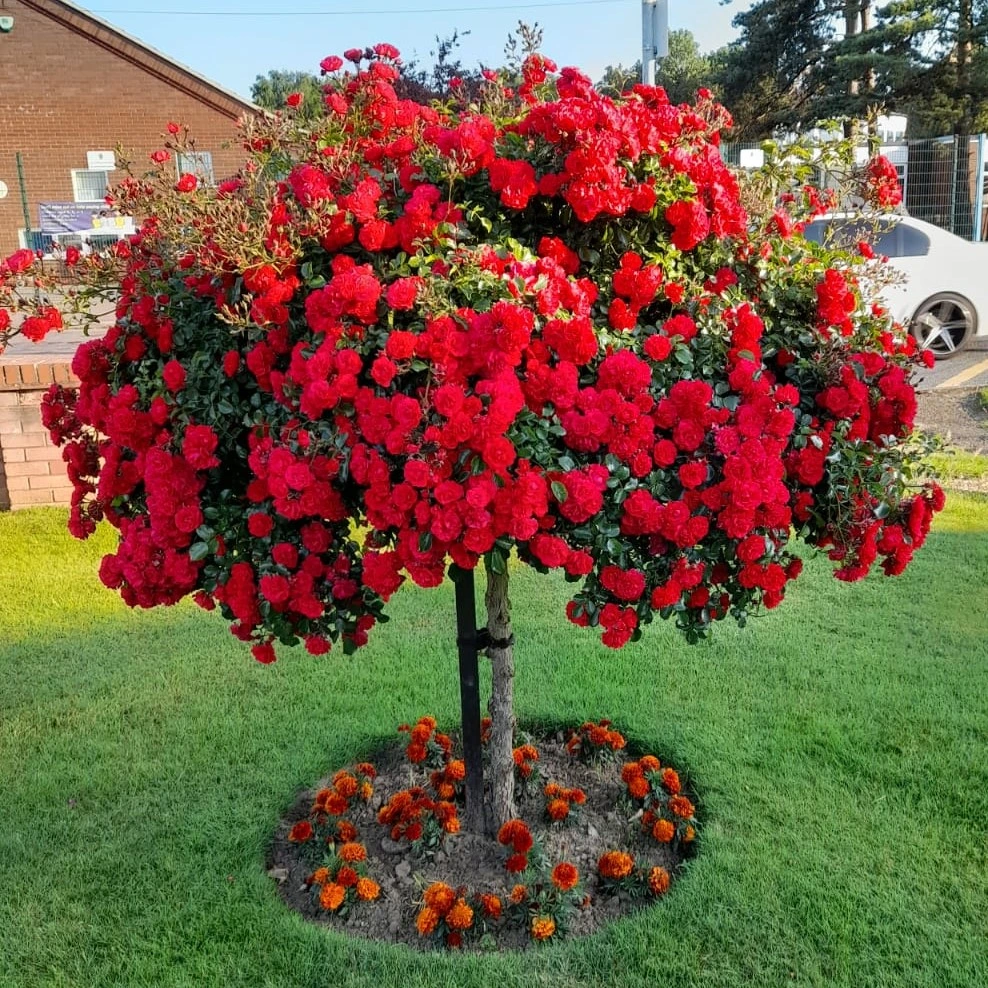
Tree roses, also known as standard roses, are created by grafting a rose bush onto a tall stem, resulting in a small tree-like plant. These roses are commonly used as focal points in gardens or container displays due to their unique structure. Tree roses are available in various rose types, including hybrid teas, floribundas, and miniatures.
12. Noisette Roses
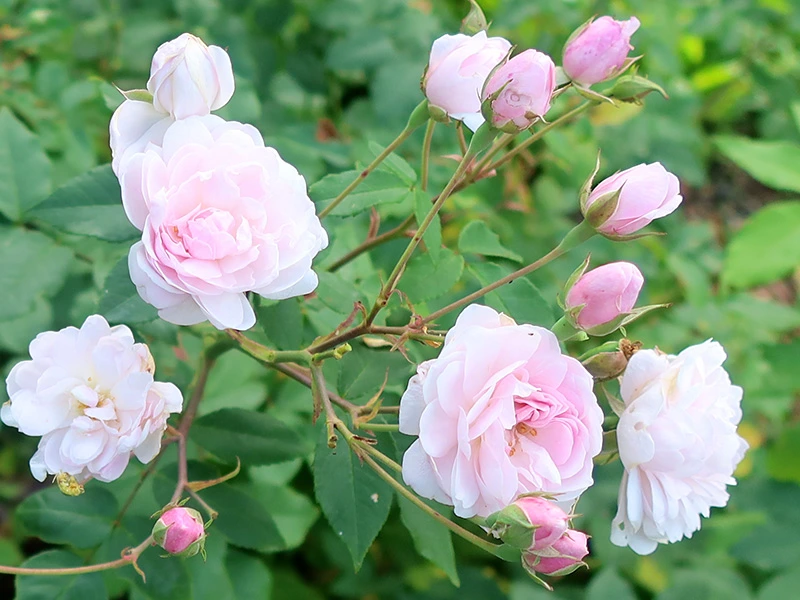
Noisette roses are a unique climbing variety known for their clusters of small, fragrant blooms and the ability to bloom throughout the growing season. Originating in the southern United States, these roses are loved for their strong scent and vigorous growth, often seen draping over fences or trellises.
13. Bourbon Roses
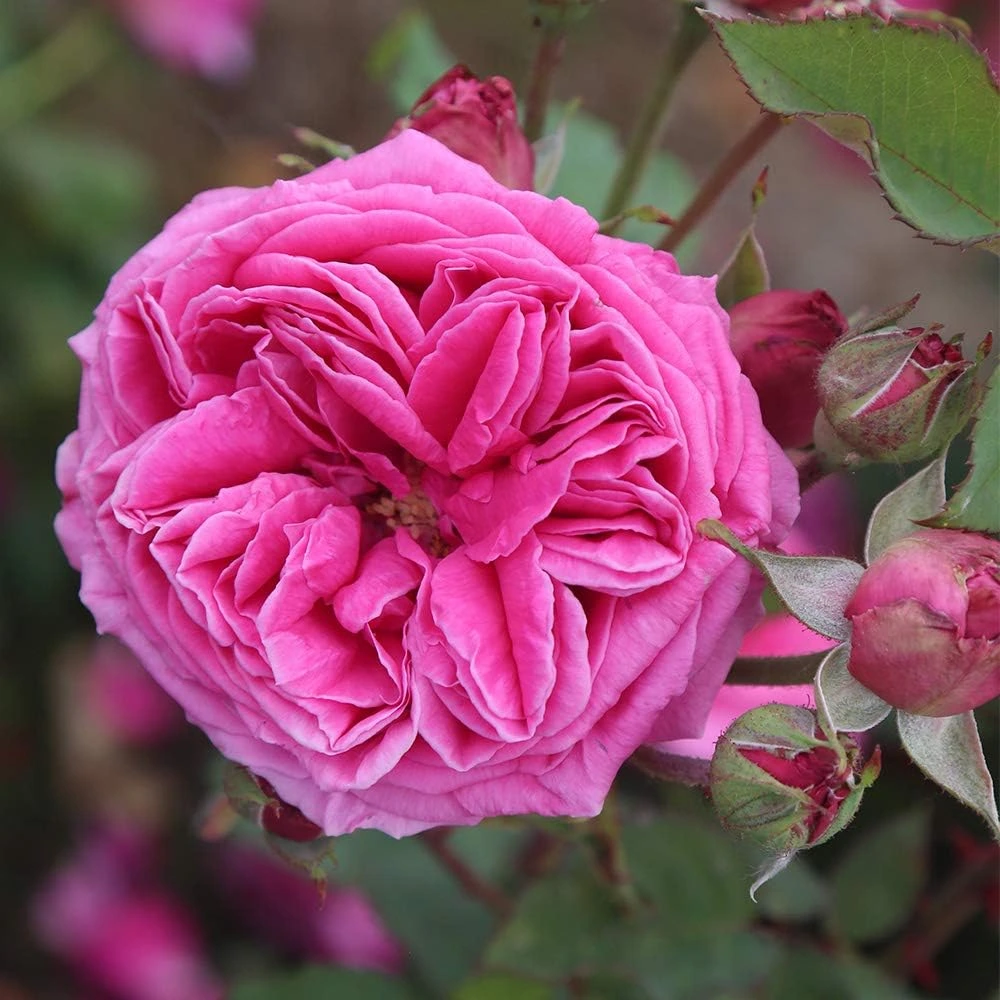
Bourbon roses are a hybrid variety that blends the characteristics of old garden roses with modern repeat bloomers. Known for their strong fragrance and lush, full flowers, these roses bloom throughout the season and come in various shades of pink, red, and white. They are ideal for both garden and cutting purposes.
14. Damask Roses
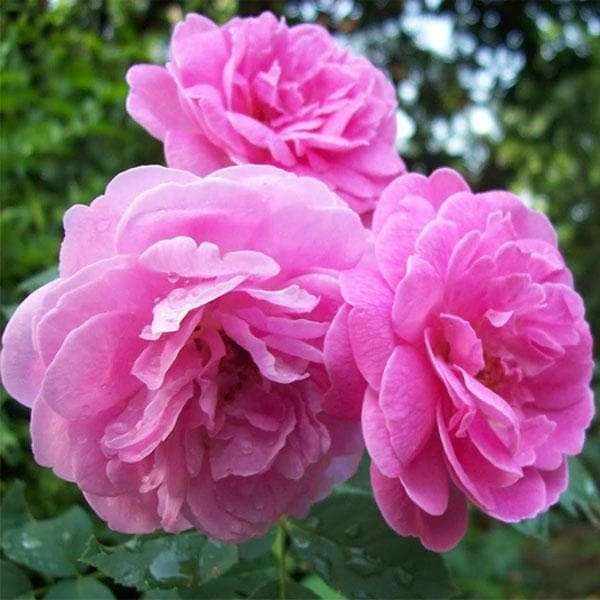
Famous for their intense fragrance, Damask roses have been cultivated for centuries, especially for producing rose oil used in perfumes and skincare. These roses bloom in shades of pink and white and are admired for their historical significance and medicinal uses. Damask roses are often found in traditional, romantic gardens.
15. Moss Roses
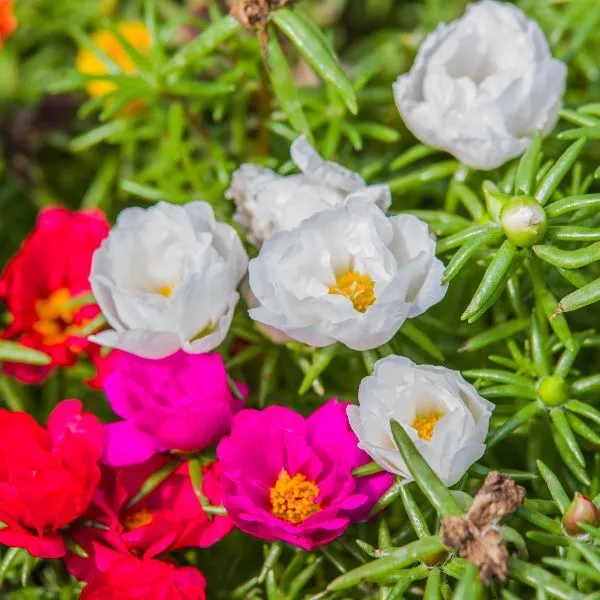
Moss roses are a unique variety distinguished by the moss-like growth on their stems and buds, which gives them a distinct texture. These roses bloom in various colors and are highly fragrant, often used in cottage gardens. Their unusual appearance adds a touch of whimsy and elegance to any garden setting.
Farming Care for Rose Flowers: Simple Guide to Growing Healthy Roses
Growing roses can be incredibly rewarding, but they do require proper care and attention to thrive. Whether you’re planting roses in a garden or tending to them in pots, following these basic steps will help your roses bloom beautifully. Here’s a simple, easy-to-follow guide on how to take care of rose plants.
1. Choosing the Right Location
Roses love sunlight, so it’s important to plant them in a spot that receives at least 6 hours of direct sunlight each day. Morning sun is especially important as it helps dry off dew and keeps the plant healthy. Avoid planting roses in shaded areas or near large trees, as they might not get enough sunlight or nutrients.
2. Preparing the Soil
Roses thrive in well-drained, fertile soil. Before planting, ensure the soil is loose, rich in organic matter, and slightly acidic with a pH between 6.0 and 6.5. If the soil is too heavy or clay-like, mix in compost, peat moss, or other organic materials to improve drainage and fertility. Good soil is key to supporting strong roots and healthy growth.
3. Planting Roses
When planting rose bushes, dig a hole large enough to accommodate the root ball. The hole should be about 18 inches wide and deep. Place the rose bush in the hole, making sure the roots are spread out and the graft union (the bump where the rose is grafted onto the rootstock) is about 2 inches below the soil surface. Fill the hole with soil and water the plant thoroughly to settle it.
4. Watering Roses
Roses need regular watering, especially in hot or dry weather. Water deeply once or twice a week, aiming for the roots rather than spraying the leaves, which can cause diseases. Use a soaker hose or water directly at the base of the plant to keep the soil moist but not waterlogged. Avoid overhead watering as it can lead to fungal infections.
5. Fertilizing Roses
To encourage strong growth and abundant blooms, feed your roses with a balanced fertilizer designed for roses. Fertilize in early spring when new growth starts, and then continue feeding every 4-6 weeks throughout the growing season. A combination of organic matter like compost or well-rotted manure and chemical fertilizers works well for roses.
6. Pruning Roses
Pruning is essential for healthy rose plants as it removes dead or weak branches and encourages new growth. Prune roses in late winter or early spring before new growth starts. Use sharp, clean pruning shears to cut at a 45-degree angle just above an outward-facing bud. Remove any dead or diseased wood, as well as thin or crossing branches, to allow air and sunlight to penetrate the plant.
7. Mulching Around Roses
Apply a layer of mulch around the base of the plant to help retain moisture, regulate soil temperature, and suppress weeds. Mulch also helps prevent soil-borne diseases from splashing onto the leaves. Use organic materials like wood chips, straw, or compost, and keep the mulch about 2-3 inches deep. Be sure to keep it a few inches away from the base of the plant to avoid rot.
8. Pest and Disease Control
Roses are prone to pests like aphids, spider mites, and Japanese beetles, as well as diseases like black spot, powdery mildew, and rust. Inspect your plants regularly for signs of pests or disease. You can use insecticidal soap or neem oil to treat pests and apply fungicides to prevent or control fungal infections. Always remove any diseased leaves from the plant and the ground around it.
9. Deadheading (Removing Spent Flowers)
To encourage continuous blooming, remove dead or faded flowers regularly. This process, called deadheading, directs the plant’s energy into producing new blooms instead of seeds. Simply cut off the spent flowers just above the first set of healthy leaves.
10. Winter Care for Roses
Roses need protection during cold winters. In late fall, after the first frost, stop fertilizing and deadheading to allow the plant to prepare for dormancy. Mound soil or mulch around the base of the plant to protect the graft union from freezing. In areas with severe winters, you can cover the rose with burlap or other protective materials to shield it from wind and ice.
11. Supporting Climbing Roses
If you’re growing climbing roses, it’s important to train them to grow along a trellis, fence, or other support structures. Tie the canes loosely with soft twine, allowing space for the plant to grow. Regularly check and adjust the ties as the plant grows. Prune climbing roses after the first bloom to shape them and remove old wood.
12. Companion Planting
Some plants make excellent companions for roses, helping to deter pests and improve the overall health of the garden. Lavender, marigolds, and garlic are good examples of plants that can be grown alongside roses to keep away harmful insects and promote growth.
Common Rose Diseases and Simple Solutions
Roses, while beautiful and captivating, are prone to several diseases that can affect their growth and appearance. Proper care and early detection can keep these issues under control and help your roses stay healthy. Here’s a list of common rose diseases and easy solutions to treat or prevent them.
1. Black Spot
Black spot is one of the most common fungal diseases in roses. It appears as black or dark brown spots on the leaves, which eventually turn yellow and fall off, weakening the plant.
Solution:
Remove and discard infected leaves to prevent the spread.
Water at the base of the plant, avoiding wetting the leaves.
Apply a fungicide specifically designed for black spot prevention and treatment.
Ensure proper air circulation around the plant by spacing roses adequately and pruning them regularly.
2. Powdery Mildew
Powdery mildew looks like a white or gray powdery coating on the leaves, stems, and buds of the rose plant. It typically occurs in warm, dry conditions, especially during the spring and fall.
Solution:
Water roses early in the day to allow leaves to dry completely.
Improve air circulation by pruning crowded branches.
Use sulfur-based fungicides or organic solutions like neem oil to treat the infection.
Remove infected parts of the plant to stop further spreading.
3. Rust
Rust is a fungal disease that causes small, orange or reddish spots on the underside of leaves. Over time, these spots can spread, causing the leaves to drop prematurely.
Solution:
Remove and dispose of infected leaves as soon as you notice them.
Keep the foliage dry by watering at the base of the plant.
Apply fungicides that are effective against rust, following the instructions carefully.
Regularly inspect the plant, especially during humid weather, to catch the disease early.
4. Botrytis Blight (Gray Mold)
Botrytis blight, also known as gray mold, causes rose buds to turn brown or gray and fail to open. This fungal disease thrives in cool, wet conditions and affects flowers, leaves, and stems.
Solution:
Remove and discard any infected flowers or buds immediately.
Avoid overhead watering and ensure good air circulation around the plant.
Apply fungicides suitable for treating botrytis, especially during wet or humid weather.
Regularly prune the plant to promote air flow and remove dead or damaged tissue.
5. Downy Mildew
Downy mildew is a serious fungal disease that causes purplish or dark red spots on the leaves and stems. The leaves may eventually yellow and fall off, weakening the plant. It typically occurs in cool, moist conditions.
Solution:
Remove infected leaves and discard them to prevent further spread.
Avoid wetting the foliage and water the plant early in the day.
Use a fungicide designed for downy mildew control.
Make sure the roses are planted in a spot with good air circulation and sunlight to dry the leaves.
6. Crown Gall
Crown gall is a bacterial disease that causes swollen, rough, tumor-like growths (galls) to form at the base of the plant, on roots, or stems. The galls can block the flow of water and nutrients, weakening the rose over time.
Solution:
Remove and destroy any affected plants to prevent the spread of bacteria to other plants.
Avoid injuring the plant while pruning or transplanting, as bacteria can enter through wounds.
Use sterilized pruning tools to reduce the risk of contamination.
Ensure good soil drainage, as bacteria thrive in waterlogged conditions.
7. Rose Mosaic Virus
This virus causes yellow streaks or patterns on the leaves, which can lead to stunted growth and reduced blooming. Unfortunately, there is no cure once a plant is infected.
Solution:
Prevent the disease by purchasing virus-free rose plants from reputable nurseries.
Keep your tools clean and sterilized to avoid spreading the virus.
Remove severely infected plants to protect other roses in the garden.
Focus on providing good care to the infected plant, as it may still produce flowers despite the disease.
8. Canker
Canker appears as sunken, discolored areas on the stems or branches of rose plants. This fungal disease often occurs when the plant is stressed or injured, especially after pruning.
Solution:
Prune away any infected stems or branches, cutting just below the diseased area.
Sterilize your pruning tools between cuts to prevent spreading the fungus.
Keep your roses healthy by ensuring they are well-watered and properly fertilized.
Apply fungicides to prevent further infection, particularly after pruning.
9. Anthracnose
Anthracnose is a fungal disease that causes small black or brown spots on the leaves. Over time, the centers of the spots may turn gray or white, and the leaves may drop prematurely.
Solution:
Remove and destroy any infected leaves and plant material.
Keep the rose foliage dry by watering at the base of the plant.
Apply a fungicide to prevent and treat anthracnose, especially during rainy periods.
Prune the plant to improve air circulation and reduce humidity around the leaves.
10. Sooty Mold
Sooty mold isn’t a direct disease of the rose plant but rather a secondary issue caused by aphids or other pests that produce honeydew. The black, sooty mold grows on the honeydew, covering the leaves and blocking sunlight.
Solution:
Control aphids and other pests by using insecticidal soap or neem oil.
Wash off the mold with a gentle stream of water, or wipe the leaves with a damp cloth.
Keep the plant healthy to avoid stress and susceptibility to pest infestations.
Encourage natural predators like ladybugs to control aphid populations.
How to Grow Rose Flowers Indoors: A Simple Guide
Growing roses indoors can be a rewarding experience, as it allows you to enjoy their beauty and fragrance year-round, even if you don’t have a garden. While roses are typically outdoor plants, they can thrive indoors with the right care. Here’s a step-by-step guide on how to grow rose flowers indoors in easy, simple steps.
1. Choosing the Right Rose Variety
Not all roses are suitable for indoor growth, so it’s important to choose the right variety. Miniature roses are the best option for indoor gardening because they are smaller and adapt well to container life. Some hybrid teas or patio roses can also work indoors, but they will need more space and care.
2. Selecting the Right Pot
Pick a pot that is at least 10 to 12 inches deep with good drainage holes. Roses need space for their roots to grow, and good drainage is essential to prevent root rot. If possible, use a clay or terracotta pot, as these allow the soil to breathe, helping keep the roots healthy.
3. Using Quality Potting Soil
Use a well-draining potting mix, preferably one designed for roses or flowers. You can also mix your own by combining garden soil, compost, and sand to improve drainage. Avoid heavy, clay-like soils that can retain too much moisture.
4. Planting the Rose
Start by placing a layer of small stones or gravel at the bottom of the pot to ensure proper drainage. Fill the pot halfway with the potting mix, place the rose plant in the center, and then fill the pot with more soil around the roots. Be sure to leave about an inch of space at the top of the pot for watering. Water the rose thoroughly after planting to help settle the soil.
5. Providing Adequate Light
Roses need a lot of sunlight to grow well, so place the plant near a south-facing window that gets at least 6 hours of direct sunlight each day. If natural light is limited, consider using a grow light to supplement the light. Keep the grow light on for 12-16 hours a day to mimic natural sunlight.
6. Watering the Rose Plant
Watering roses indoors is essential, but you need to be careful not to overwater. Check the top inch of the soil regularly; if it feels dry, water the plant until it drains from the bottom. Always water at the base of the plant and avoid getting the leaves wet, as this can cause disease. During winter, reduce watering slightly as the plant won’t need as much moisture.
7. Maintaining Humidity
Indoor environments can be quite dry, especially in winter when heating is used. Roses like moderate humidity levels, so try to maintain humidity around 40-50%. You can use a humidifier in the room, or place a shallow tray filled with water and pebbles near the plant to increase moisture in the air.
8. Fertilizing the Rose
Indoor roses need regular feeding to grow healthy and bloom well. Use a balanced liquid fertilizer or a slow-release fertilizer specifically designed for roses. Feed the plant every 4-6 weeks during the growing season (spring and summer). Reduce feeding in the fall and stop during the winter when the plant goes into dormancy.
9. Pruning and Deadheading
Prune your indoor roses to keep them healthy and encourage more blooms. Trim away any dead or weak branches, and shape the plant as needed. Regularly remove (deadhead) spent flowers to encourage the plant to produce more buds. Use clean, sharp scissors or pruning shears to make cuts just above a leaf node (the place where a leaf joins the stem).
10. Controlling Pests
Even indoor roses can attract pests like aphids, spider mites, and whiteflies. Check the plant regularly for any signs of pests. You can control them using insecticidal soap, neem oil, or wiping the leaves with a damp cloth. Ensure good air circulation around the plant to prevent pest infestations.
11. Managing Indoor Temperature
Roses prefer a stable temperature of 65-75°F (18-24°C) during the day and slightly cooler at night. Avoid placing the plant near drafty windows, heating vents, or air conditioners, as sudden temperature changes can stress the plant. If the room gets too cold, use a space heater to keep the area warm, but not too close to the plant.
12. Repotting the Rose
Over time, roses outgrow their pots, and you may need to repot them every 1-2 years. Look for signs like roots growing out of the drainage holes or if the plant seems stunted. Choose a slightly larger pot and refresh the soil to give the plant more space and nutrients to continue thriving.
How to Grow Rose Flowers in a Garden: A Simple Step-by-Step Guide
Growing roses in a garden can bring color, beauty, and fragrance to your outdoor space. While roses are known for needing some care, they are also quite hardy and can thrive if planted and cared for properly. Whether you’re a beginner or an experienced gardener, this easy-to-follow guide will help you grow healthy, vibrant roses in your garden.
1. Choosing the Right Rose Variety for Your Garden
There are many types of roses to choose from, so pick a variety that suits your garden’s size and conditions. For smaller gardens, miniature roses or shrub roses are great options. If you want climbing roses to decorate walls or trellises, consider climbing roses. For classic, large blooms, hybrid tea roses are a good choice.
2. Finding the Perfect Location
Roses need plenty of sunlight to thrive. Select a spot in your garden that gets at least 6-8 hours of direct sunlight each day, especially in the morning. Avoid planting roses near large trees or shrubs, as they may compete for nutrients and water. A sunny, open area will help your roses grow strong and healthy.
3. Preparing the Soil
Roses prefer well-drained, loamy soil that is rich in organic matter. Before planting, loosen the soil to about 12-18 inches deep and mix in compost, well-rotted manure, or organic fertilizer. This improves drainage and provides essential nutrients for the roses. The soil’s pH should be slightly acidic, ideally between 6.0 and 6.5, so test your soil if needed and adjust accordingly with lime (to raise pH) or sulfur (to lower pH).
4. Planting Roses in the Garden
Timing: The best time to plant roses is in early spring, after the last frost, or in the fall, about 6 weeks before the first expected frost.
Digging the Hole: Dig a hole that is about twice as wide and as deep as the rose’s root ball. This gives the roots enough space to spread and establish.
Planting: Place the rose bush in the hole so that the bud union (the swollen area where the rose is grafted) is at or slightly below ground level in cold climates, and just above ground level in warmer climates. Fill the hole with soil and press it down gently to remove air pockets. Water the plant thoroughly after planting.
5. Watering the Rose Plants
Roses need consistent watering, especially during the first few weeks after planting. Water deeply about once a week, ensuring the water reaches the roots. Avoid wetting the leaves, as this can lead to fungal diseases. Instead, water at the base of the plant. During hot, dry periods, you may need to water more frequently, but always check the soil moisture first.
6. Fertilizing Roses
Roses are heavy feeders and need regular fertilization for strong growth and blooming. Use a balanced rose fertilizer or an all-purpose fertilizer, applying it in early spring when new growth begins. Continue fertilizing every 4-6 weeks during the growing season. Be careful not to over-fertilize, as this can burn the roots. Organic options like compost, fish emulsion, or well-rotted manure also provide nutrients and improve soil health.
7. Mulching Around Roses
Mulch helps roses retain moisture, suppresses weeds, and keeps the soil temperature stable. Spread a 2-3 inch layer of organic mulch, such as wood chips, straw, or compost, around the base of the plant, but leave a small gap around the stem to prevent rot. Mulch also reduces water evaporation, meaning you’ll need to water less frequently.
8. Pruning Roses
Pruning is essential for keeping your roses healthy and encouraging new growth. The best time to prune is in late winter or early spring, before the growing season starts. Here’s how to do it:
Remove any dead, damaged, or diseased wood.
Cut back weak or thin stems to improve air circulation.
Shape the plant by cutting above outward-facing buds, ensuring your cuts are clean and angled. Pruning promotes healthy growth, prevents disease, and encourages more blooms.
9. Supporting Climbing Roses
If you are growing climbing roses, provide a trellis, fence, or arbor for support. Gently tie the canes to the structure with soft garden ties, allowing space for the stems to grow. Regularly train and prune climbing roses to keep them looking neat and producing flowers.
10. Preventing and Controlling Pests
Common rose pests include aphids, spider mites, and Japanese beetles. Regularly check your roses for signs of pests and treat them early. Here’s how:
Aphids: Use insecticidal soap or a blast of water to remove them.
Spider Mites: Increase humidity around the plant or use neem oil.
Japanese Beetles: Handpick them off the plant or use traps.
Encourage natural predators like ladybugs and lacewings to help control pest populations. You can also plant companion plants like garlic, marigolds, or lavender to deter pests.
11. Preventing Rose Diseases
Roses are prone to diseases like black spot, powdery mildew, and rust, especially in humid conditions. Prevent these by:
Watering at the base to keep the leaves dry.
Providing enough space between plants for good air circulation.
Removing any infected leaves or stems immediately.
Applying a fungicide during the growing season if necessary.
Keeping your roses healthy through proper watering, spacing, and pruning is the best way to prevent disease.
12. Winter Care for Roses
In colder climates, roses need protection during the winter. After the first frost, stop fertilizing and allow the plant to prepare for dormancy. To protect the roots, mound soil or mulch around the base of the plant. For added protection, cover the plant with burlap or rose cones to shield it from harsh winter winds and cold temperatures.
13. Deadheading Roses
To encourage continuous blooming, remove spent flowers (deadheading) by cutting them off just above the first set of five healthy leaves. This prevents the plant from wasting energy on seed production and redirects it to growing new blooms.
Health Benefits of Rose Flower
Reduces Stress and Anxiety
The soothing fragrance of rose flowers helps reduce stress and anxiety. It promotes relaxation and improves mood, creating a sense of calmness.
Good for Glowing Skin
Rose water, made from rose petals, helps in maintaining skin’s moisture and makes it soft and glowing. It also acts as a natural toner for the skin.
Reduces Inflammation and Irritation
Rose has anti-inflammatory properties that help in reducing swelling and irritation. Applying rose water on the skin can soothe rashes and sunburns.
Improves Digestion
Consuming rose petals can aid digestion and help relieve constipation. It’s a natural remedy for stomach and intestinal issues.
Boosts Immune System
Rose is rich in Vitamin C, which strengthens the immune system and helps the body fight off infections and illnesses.
Supports Heart Health
Consuming rose petals may improve heart health by helping to regulate blood pressure and promoting healthy circulation.
Culinary Uses in Dishes of Rose Flower in Dishes
Rose Tea
Dried rose petals are often used to make rose tea. It has a soothing aroma and helps in digestion, providing a calming effect.
Rose Syrup
Rose petals are used to make rose syrup, which can be added to drinks, milkshakes, and desserts. It gives a refreshing flavor and a hint of sweetness.
Rose-Flavored Sweets
Rose petals are widely used in traditional sweets like gulab jamun, rose barfi, and Turkish delight. They add a delicate floral flavor and fragrance.
Rose Jam (Gulkand)
Gulkand, a type of rose petal jam, is made by mixing fresh rose petals with sugar. It’s a cooling and sweet spread often eaten with bread or used in desserts.
Rose Ice Cream
Rose petals and rose water are used to flavor ice cream, giving it a subtle floral taste that is both unique and refreshing.
Salads and Garnishes
Fresh rose petals can be added to salads for a pop of color and a light, aromatic touch. They also serve as an elegant garnish for various dishes.
Rose-Infused Drinks
Rose petals are often infused in cocktails, lemonades, and cold brews to add a fragrant twist to beverages.
Frequently Asked Questions (FAQ) About Rose Flower
Can we eat rose petals?
Yes, rose petals are edible. They are often used in teas, desserts, and salads for their flavor and health benefits.
What are the health benefits of rose water?
Rose water hydrates the skin, soothes irritation, reduces redness, and acts as a natural toner. It’s also known to help reduce stress and improve mood.
How can I use roses in cooking?
You can use roses in various ways, such as making rose tea, rose syrup, rose-flavored sweets, and garnishing salads or drinks with fresh petals.
Is rose good for skin care?
Yes, rose is excellent for skincare. Rose water helps balance the skin’s pH, controls excess oil, and has anti-inflammatory properties that reduce acne and irritation.
Can rose petals be used in herbal teas?
Absolutely! Dried rose petals are often used in herbal teas for their soothing aroma, mild flavor, and digestive benefits.
What is rose oil used for?
Rose oil is commonly used in aromatherapy to relieve stress and anxiety. It’s also used in skincare products for its anti-aging properties.
Are all types of roses safe to use in food and skincare?
Not all roses are suitable for consumption or skincare. Always ensure that the roses you use are organically grown without pesticides or chemicals.
Can rose flowers help with anxiety?
Yes, the scent of roses has a calming effect that can reduce anxiety and promote relaxation, especially when used in aromatherapy.
What is Gulkand?
Gulkand is a sweet preserve made from rose petals and sugar. It is often used in desserts and is known for its cooling properties, especially in hot weather.
Conclusion on Rose Flower
The rose flower is not only a symbol of beauty and love but also offers a wide range of benefits and uses. From skincare and aromatherapy to culinary delights and traditional medicine, roses are highly versatile. Their petals can soothe the skin, reduce stress, and even enhance the flavor of dishes. Whether used for health, beauty, or simply for decoration, the rose continues to be cherished for its unique qualities and natural goodness.

